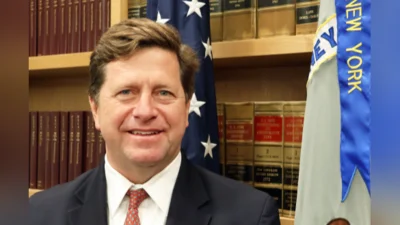The Congressional Record is a unique source of public documentation. It started in 1873, documenting nearly all the major and minor policies being discussed and debated.
“START TREATY” mentioning the U.S. Dept of State was published in the Senate section on pages S10501-S10504 on Oct. 19, 2009.
The publication is reproduced in full below:
START TREATY
Mr. KYL. Mr. President, I wish to speak to an issue that is very timely because the United States and Russia are beginning today their seventh round of negotiations on the so-called START treaty. This is a treaty that could limit the number of nuclear warheads and delivery vehicles by both countries and provide an extension of various compliance and verification procedures that are currently followed by both countries.
It is interesting to me that the Russians do not appear to be in much of a hurry to complete the negotiations before the treaty expires, and it expires on December 5 of this year. According to Assistant Secretary of State Richard Verma, in a letter to me and several fellow Senators, I quote:
Russian views with respect to the meaning of these two terms--
And he is specifically talking about the definitions of ``strategic delivery vehicle'' and ``associated warheads,'' both of which are obviously key to the treaty, in any event--
Russian views with respect to the meaning of these two terms have not yet been fully explained by the Russian Federation.
We are in the seventh round of negotiations, as I said. When these two fundamental terms have not yet had an explanation by the Russian side as to what they mean and, in effect, what they are tabling in the way of proposals, it is pretty clear we are not far enough down the road to see much light at the end of the tunnel.
With regard to the verification rules, which are the heart of the START treaty, he wrote:
The Russian Federation has not, as yet, elaborated sufficiently on its views concerning verification for the United States to judge the nature of its approach.
Again, it is interesting that this letter, which is dated October 5, suggests the Russians had not yet provided to us their position on key provisions of this treaty. Yet we are supposed to have the negotiations completed before the treaty expires on December 5.
It is increasingly clear to me, as a result of all this, there will not be a treaty by December 5; certainly not one that is ratified by the Senate, which is a process the Senate will require several months, obviously, to complete. As I said, I think it is doubtful we will even see one signed by the United States and Russia by December 5.
It is clear to me the Russians have sensed an opportunity that they can use time to their advantage. They saw an overly ambitious American agenda, which went far beyond extending the compliance and verification measures of the existing treaty to actual proposals to significantly cut the numbers of warheads and delivery vehicles. They saw this obviously ambitious agenda pushing up against a very short timeframe--
in this case December 5. I think they have cleverly manipulated the situation, among other things, by throwing additional subjects into the mix, such as missile defenses and advanced conventional modernization and our nonnuclear conventional strike capabilities. By throwing these things into the mix, they have created a situation where it is going to be impossible to conclude negotiations by December 5, at least if the United States wants to stand firm on its position that neither the conventional strike capability nor missile defenses should be a subject of these negotiations.
I think the Russians think they can scoop up a bunch of concessions from the United States because of this short timeframe and the fact that the United States will obviously want to conclude the negotiations, if they can, by December 5. I think an example of concessions would be the recent decision of the United States to leave ourselves more exposed to a long-range missile threat from Iran as a result of taking out the so-called missile shield we had previously committed to the countries of Poland and the Czech Republic. I think the Russians may have correctly assessed that the Obama administration would be willing to make trades such as the one on European missile defense in order to get nuclear force levels lower because this would show progress on President Obama's agenda for a nuclear weapons-free world. At the same time, the Russians are attempting to constrain the United States.
It is interesting they are actually developing programs, systems that would be prohibited by the START treaty. One is the RS-24 multiple warhead ballistic missile, which the Russians tested as recently as May 29, 2007. That would be illegal for the Russians to deploy under START. So why are they testing it? They seem very happy to negotiate for fewer missiles because they would be able to add multiple warheads on the missiles they have.
That is known as MIRVing or the multiple reentry vehicles. You just add more warheads on the same missile and you can accomplish the same thing, as if you had more missiles with an individual warhead on each one. It is clearly not progress, especially since the purpose of START, among other things, is to promote greater stability, which comes from reducing the number of multiple-warhead weapons.
If the administration had simply limited the agenda to preserving and continuing the START treaty verification measures, we probably could have met the December 5 deadline and we could have preserved the treaty and avoided issues such as missile defense that have now been raised by the Russians.
Although the Senate will have to participate in this ratification process--and very soon, quite possibly--we really have no idea yet how the administration will deal with the expiration of START on December 5. What options does it have in mind to deal with that expiration date? How will it seek to extend the treaty? What are the legal consequences for information sharing and inspections both here and in Russia? What are the separation-of-power issues of the various approaches having to do with a treaty ratified by the Senate which expires, with the administration making treaty-like commitments to continue abiding by the treaty during the course of time prior to the Senate's ratification of the treaty? All of these are questions to which we have not gotten answers. Yet time is wasting.
Several of my colleagues and I have asked for the answers to these questions in our August 14 letter to Assistant Secretary Gottemoeller. The October 5 response from Mr. Verma ignored the questions about the expiration date, and we need the answers.
Beyond December 5, getting a new treaty ratified is not going to be an easy proposition. Many Members of the Senate have been clear that because the administration is seeking nuclear force reductions, it must concomitantly take responsibility for the nuclear forces that will remain. We will have fewer of them. We need to know that they will work and that they are safe.
Of course, both of these issues are related to the nuclear posture review, which isn't really due until January. But since the administration rushed to its analysis to justify warhead and delivery vehicle reductions, it must now act quickly to assemble a comprehensive modernization plan that includes warheads, the nuclear weapons complex, and delivery systems. That plan has to be presented to the Senate no later than when they send the treaty up to the Senate, and the fiscal year 2011 budget will need to be sent at roughly the same time because it is the first year of the effectuation of the plan they would be presenting. Presumably, the plan will encompass maybe, let's say, a decade of nuclear weapons complex modernization, but next year's budget will really be the first time we will be able to verify the administration's seriousness about this modernization effort.
So as to ensure there is no doubt on what ``comprehensive modernization plan'' means, let me refer to the definition provided by the Perry-Schlesinger Congressional Commission on the Strategic Posture of the United States. The essential elements of such a program identified by the Perry-Schlesinger Commission are, first, full and timely Lifetime Extension Programs for the B61 and W76 warheads consistent with our military needs; second, funding for a modern warhead that includes new approaches to life extension involving replacement or, possibly, component reuse; third, full funding for stockpile surveillance work through the nuclear weapons complex as well as the science and engineering campaign at our National Laboratories; fourth, full funding for the timely replacement of the Los Alamos plutonium research and development and analytical chemistry facility, the uranium facilities at the Oak Ridge Y-12 plant, and a modern pit facility. These are the essential components the President needs to present. It is the minimum that should be included.
I might add that this is already required as part of the fiscal 2010 Defense Authorization Act I presume this body will soon pass and send to the President's desk. If anything short of this is submitted, the resulting delay in consideration of the treaty will be through no fault of the Senate; instead, blame will be with the administration and its failure to heed numerous admonitions from Senators. We needed this plan submitted at the same time as the treaty.
It goes without saying that the administration must also understand that any limitations on U.S. missile defense or nonnuclear global strike capability will also be a deal breaker in the Senate.
Finally, I will refer again to the issue of Russia's multiple-warhead RS-24. In this case, it appears the Russians have cheated--if not in the letter of the START agreement, at least in its spirit--by converting one of their existing missiles, the TOPOL-M, to this new multiple-warhead variant.
However, if you look at the 2005 Section 403 Report, which is also known as the Adherence to and Compliance With Arms Control, Nonproliferation, and Disarmament Agreements and Commitments report, prepared by the State Department's VCI Bureau, there are a litany of other outstanding issues regarding Russia's failure to comply with START.
In fact, to quote from the 2005 report:
A significant number of longstanding compliance issues that have been raised in the START Treaty's Joint Compliance and Inspection Commission remain unresolved.
Mr. President, I ask unanimous consent to have printed in the Record at the conclusion of my remarks the portion of the 2005 report dealing with Russia's noncompliance with its obligations under the 1991 agreement.
The ACTING PRESIDENT pro tempore. Without objection, it is so ordered.
(See exhibit 1.)
Mr. KYL. Mr. President, it is clear that the administration needs to tell the Senate whether this 2005 finding is still valid. In fact, I think the administration owes the Senate answers to the following questions:
When will the State Department submit the next section 403 compliance report?
Will the Senate see it before being asked to provide advice and consent on the START follow-on agreement? If not, why not?
Does the State Department expect the compliance issues with the 1991 agreement to be resolved prior to the expiration of that agreement?
Does the State Department expect the follow-on agreement to include a mechanism for swift resolution of compliance issues? Have our START negotiators proposed such a mechanism? If so, can the negotiators brief the Senate, either in open Senate or a closed venue, on how it would work?
I encourage the administration to provide answers to these questions soon. The longer it takes to receive answers, the more it appears there is something to hide. Senators will want to know why we should ratify a new treaty when the administration is not enforcing provisions of the existing treaty.
Mr. President, keeping START from expiring without replacement should not have been such a difficult matter. I regret that choices made by the administration have made it so. I encourage the administration to respond to the inquiries I have raised today, respond to the letters, the correspondence we have sent, and be able to provide to the Senate the answer to the key question: Why would we be asked to ratify a new treaty when we have not enforced compliance with the treaty it would seek to replace? All of these questions, as well as the requirement that a new modernization program be submitted, at the latest, at the same time the treaty is submitted, are important requirements for the Senate to provide its advice and consent with respect to a new START treaty.
I yield the floor.
Exhibit 1
Adherence to and Compliance With Arms Control, Nonproliferation, and
Disarmament Agreements and Commitments
III. Overview
expansion of start compliance section
Section 403 of the Arms Control and Disarmament Act--the legislative basis for the submission to Congress of this series of Noncompliance Reports--requires that the Report provide greater specificity about compliance concerns. To wit, the law requires the Report to include ``a specific identification, to the maximum extent practicable in an unclassified form, of each and every question that exists with respect to compliance by other countries with arms control, nonproliferation, and disarmament agreements with the United States.'' To comply with this requirement, this edition of the Report has included more information than ever before on, among other things, Russia's implementation of the Strategic Arms Reduction Treaty (START).
To facilitate this effort, in 2003 the United States conducted consultations with the Russian Government regarding a number of longstanding, unresolved U.S. concerns about Russian compliance with the START Treaty--some of which actually date back to the first year of START implementation. These included Russia preventing U.S. inspectors from measuring the launch canisters of certain Intercontinental Ballistic Missiles (ICBMs) or verifying that certain ICBMs do not contain more warheads than attributed under the Treaty. The U.S. concerns also included Russia failing to provide all required telemetry materials for some START-accountable flight tests, failing properly to declare certain ICBM road-mobile launchers accountable under the Treaty, and locating some deployed SS-25 ICBM launchers outside their declared restricted areas. With respect to this last issue, however, it should be noted that Russia has taken steps that have resolved U.S. compliance concerns.
V. Compliance by Successors to Treaties and Agreements Concluded
Bilaterally With the Soviet Union
the strategic arms reduction treaty (start)
Belarus, Kazakhstan, Russia, and Ukraine are in compliance with the START strategic offensive arms (SOA) central limits. Both the United States and Russia met the START seven-year reduction final ceilings of 1,600 delivery vehicles and 6,000 attributed warheads by the December 4, 2001, deadline. By December 2001, these four Former Soviet Union (FSU) successor states had reduced their aggregate forces to 1,136 deployed launchers, 5,518 deployed warheads, and 4,894 deployed ballistic missile warheads, as defined by Article ll of the Treaty, and all strategic weapons had been removed or eliminated from the territories of Ukraine, Belarus, and Kazakhstan. Additionally, START required the four FSU successor states to eliminate at least 154 heavy ICBM (SS-18) silo launchers by December 2001. In the original MOU, dated September 1, 1990, the Soviet Union declared 308 SS-18 heavy ICBM silo launchers. As of November 30, 2001, a total of 158 SS-18 silo launchers had been eliminated--104 in Kazakhstan and 54 in Russia--leaving a total of 150 deployed heavy ICBMs.
Notwithstanding the overall success of START implementation, a significant number of longstanding compliance issues that have been raised in the START Treaty's Joint Compliance and Inspection Commission (JCIC) remain unresolved. The Parties continue to work through diplomatic channels and in the JCIC to ensure smooth implementation of the Treaty and effective resolution of compliance issues and questions.
The United States raised six new compliance issues during the period of this report. The United States considers four of these to have been closed. However, several previous--often long-standing--compliance issues remain unresolved. A number of these issues, some of which originated as early as the first year of Treaty implementation, highlight the different interpretations of the Parties about how to implement the complex inspection and verification provisions of the START Treaty.
ICBM ISSUES
Inability to Confirm during Reentry Vehicle Inspections
(RVOSIs) that the Number of Attributed ICBM Warheads Has Not Been Exceeded. During RVOSIs of deployed Russian ICBMs, U.S. inspectors have been hampered, in some cases, from ascertaining whether the missile had a front section, or that the front section contained no more reentry vehicles (RVs) than the number of warheads attributed to a missile of the declared type under the Treaty.
The purpose of an RVOSI, as set forth in paragraph 6 of Article XI of the Treaty, is to confirm that a ballistic missile contains no more RVs than the number of warheads attributed to a missile of that type. The RVOSI procedures are referenced in paragraph 16 of Section IX of the Inspection Protocol and contained in Annex 3 to the Inspection Protocol. Paragraph 11 of Annex 3 allows the inspected Party to cover RVs. Inspectors have a right to view these covers and to measure hard covers prior to their placement on the RVs. The covers are then installed on the RVs before the inspectors view the front section. Under the Treaty, such covers must not hamper inspectors in ascertaining that the front section contains no more RVs than the number of warheads attributed to a missile of that type. Russian RV covers, in some instances, are too large; consequently, they fail to meet this requirement.
During certain RVOSIs, Russia did not demonstrate to the satisfaction of the U.S. inspection team that additional covered objects located on the front section, and declared by Russia not to be RVs, were not RVs. Although START does not differentiate between nuclear and non-nuclear RVs, Russia's willingness to use radiation detection equipment (RDE) during such RVOSIs to establish that the extra objects were not nuclear has been useful for resolving some, but not all, U.S. concerns.
Finding Russian RV covers, and their method of emplacement, have in some cases hampered U.S. inspectors from ascertaining that the front section of the missiles contains no more RVs than the number of warheads attributed to a missile of that type under the Treaty. Russian cooperation in the use of RDE and other measures has been helpful in addressing some, but not all, of the difficulties encountered by U.S. inspectors.
Russian Road-Mobile Launchers--``Break-in.'' Russia has failed to declare certain road-mobile launchers of ICBMs when they first leave their production facility, as required by the Treaty. Russia has moved some of these launchers to an undeclared ``break-in'' area located over 60 miles from the production facility without declaring that they have left the production facility and are accountable under the Treaty.
Pursuant to paragraph 6(b) of Article III of the Treaty, a mobile launcher of ICBMs becomes subject to the Treaty limitations when it first leaves a production facility. Not later than five days following the first exit of such a newly produced non-deployed road-mobile launcher, and its entry into Treaty accountability, Section I of the Notification Protocol requires the Party producing the new Treaty-accountable item to provide a notification of this change in data. Except for transits, Parties are proscribed from locating non-deployed mobile launchers outside the boundaries of the START-declared facilities identified in subparagraph 9(b) of Article IV of the Treaty.
Finding. Russia continues to violate START provisions relevant to these obligations.
Deployed SS-25 Road-Mobile Launchers Based Outside Their Designated Restricted Areas. Russia based some deployed SS-25 road-mobile launchers outside their declared restricted areas
(RAs) at two road-mobile ICBM bases while these RAs were under construction. The United States and Russia concluded a temporary, interim policy arrangement regarding the conduct of inspections and cooperative measures at the facilities where the launchers were housed during the period of construction. This arrangement permitted U.S. inspectors to conduct data update inspections and RVOSIs that they had not previously been able to perform, and allowed Russia to cooperate fully with providing cooperative measures access for the launchers that were previously unavailable. All of these road-mobile ICBMs and their launchers have since been transferred from their bases, and their declared RAs have been eliminated as START facilities.
Finding. Notwithstanding the interim policy arrangement, Russia's practice of locating deployed SS-25 road-mobile launchers outside their declared RAs for long periods of time constituted basing in a manner that violated the provisions of paragraphs 1 and 9 of Article VI of the Treaty. This practice has ceased and the United States considers this issue closed.
Denial of the Right to Measure Certain Deployed ICBM Launch Canisters on Mobile Launchers. U.S. inspectors have been prevented from exercising the Treaty right to measure certain ICBM launch canisters on mobile launchers, both deployed and non-deployed, that are encountered during data update inspections to confirm data regarding the type of item of inspection. Russia, for instance, has prevented U.S. inspectors from measuring launch canisters for SS-24 ICBMs contained in rail-mobile launchers that are located within the boundaries of an inspection site. Similar concerns have arisen with regard to launch canisters for SS-25 and SS-27 mobile ICBMs located on road-mobile launchers. With regard to launch canisters for these latter types, Russia and the United States have agreed upon a policy arrangement to address this issue, though it has not yet been implemented for the SS-27 ICBM.
Subparagraph 20(a) of Section VI of the Inspection Protocol identifies ICBM launch canisters as one of the items of inspection for data update inspections. In accordance with the procedures in Annex 1 to the Inspection Protocol, inspectors have the right to confirm the number and, if applicable, the types of items of inspection that are specified for the facility to be inspected and declared for the inspection site, and the right to confirm the absence of any other item of inspection at the inspection site. Pursuant to paragraph 6 of Annex 1, inspectors may view and measure the dimensions of a launch canister declared to contain an item of inspection to confirm it is of the declared type.
Finding. Russia prevented U.S. inspectors from exercising their Treaty right to measure launch canisters for SS-24 ICBMs contained in rail-mobile launchers that are located within the boundaries of an inspection site, in contravention of paragraphs 1 and 6 of Annex 1 to the Inspection Protocol. With regard to launch canisters for SS-25 and SS-27 ICBMs located on road-mobile launchers, the Parties have agreed upon a policy arrangement to address this issue, but it has not yet been implemented for the SS-27 ICBM.
TELEMETRY ISSUES
As part of the START verification regime, the Parties are obligated to notify each other of missile flight tests and to exchange telemetry tapes, tape summaries, interpretive data, and acceleration profiles for each flight test of a START-accountable ICBM or SLBM. The United States has raised several concerns regarding Russia's failure to provide all Treaty-required telemetry materials for some START-accountable flight tests in violation of paragraphs 4 and 5 of Article X of the Treaty, and paragraph 1 of Section I and paragraphs 1 and 2 of Section II of the Telemetry Protocol.
Finding. Russia has in some instances failed to comply with Treaty requirements regarding the provision of telemetry information on missile flight testing pursuant to Article X of the START Treaty and Sections I and II of the Telemetry Protocol.
Mr. KYL. Mr. President, I suggest the absence of a quorum.
The ACTING PRESIDENT pro tempore. The clerk will call the roll.
The legislative clerk proceeded to call the roll.
Mr. KYL. Mr. President, I ask unanimous consent that the order for the quorum call be rescinded.
The ACTING PRESIDENT pro tempore. Without objection, it is so ordered.
____________________








